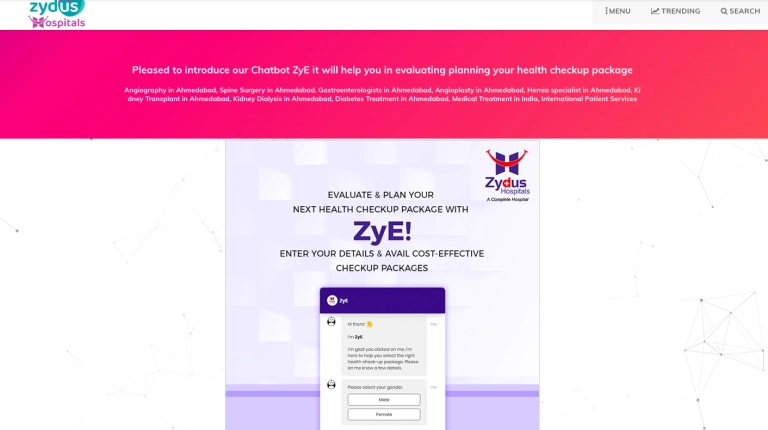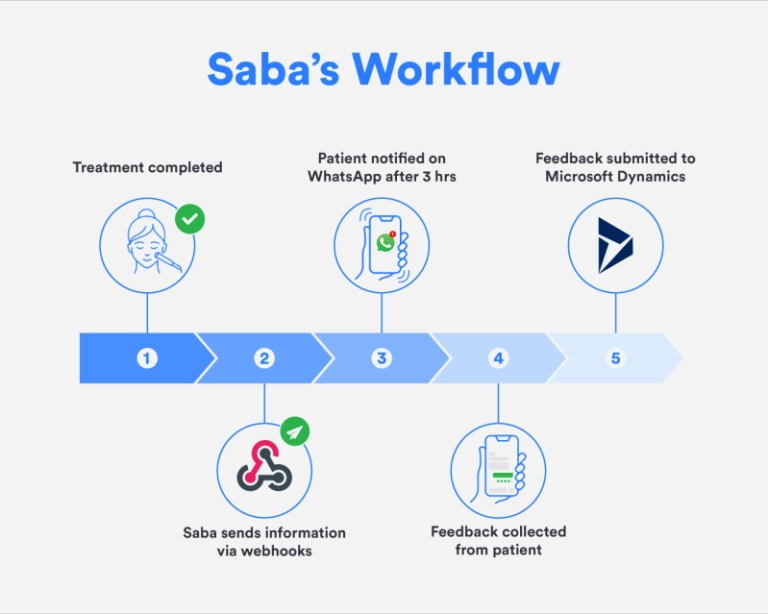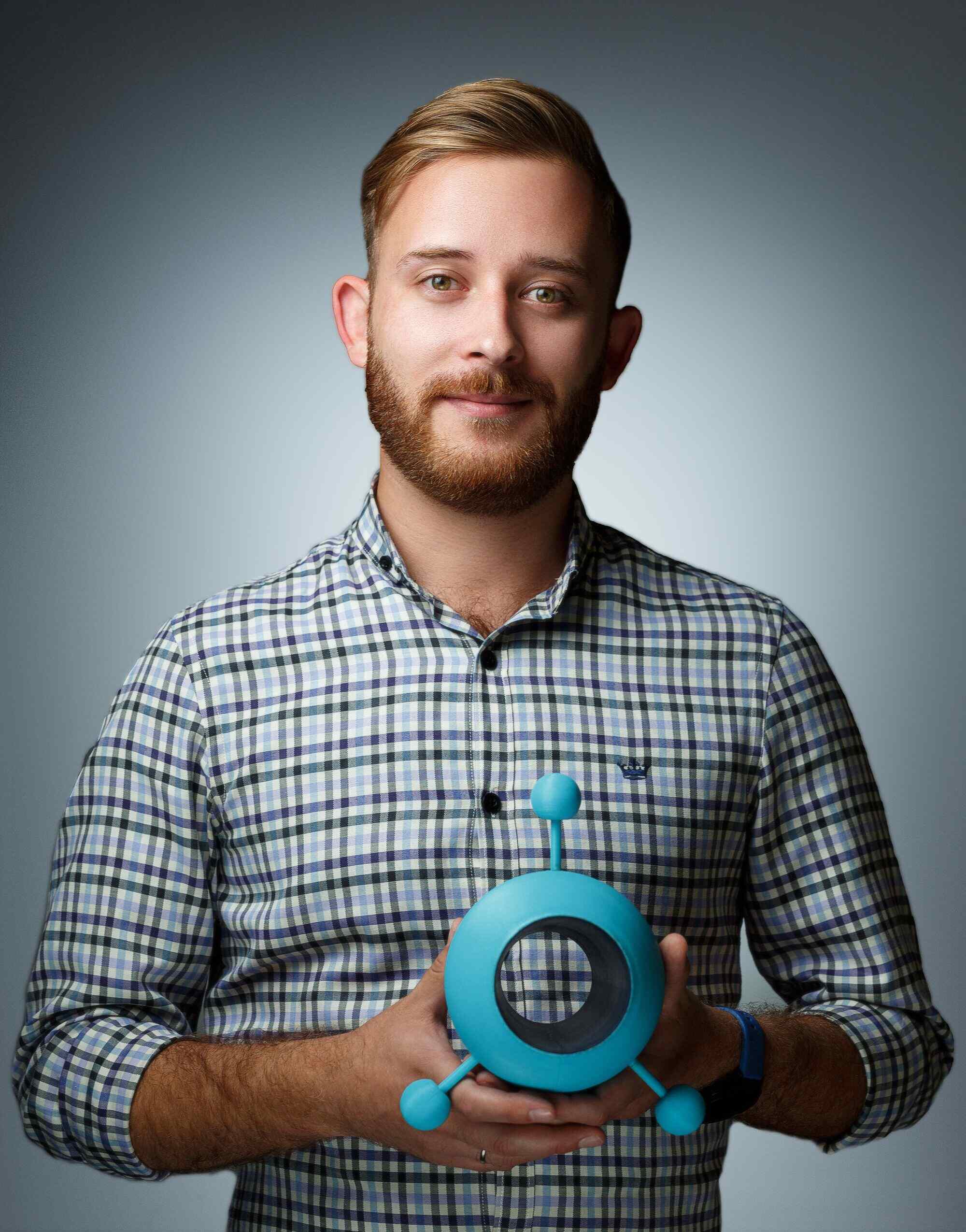AI
Benefits of Conversational AI in Healthcare: 10 Use Cases

As hospitals must comply with elaborate and frequently changing regulations, they also strive to become more commercially sustainable and patient-oriented. Many healthcare providers are caught shorthanded, trapped in between these two competing priorities.
That’s where AI can help. It can address long-standing problems in healthcare, such as bureaucratic obstacles, staff shortages, and consumerization. You can delegate a plethora of routine tasks to conversational AI, which can complete them more efficiently than humans could and even help you stay compliant with government regulations.
McKinsey estimated the untapped potential of AI in healthcare to be $1 trillion, thanks to the additional revenue and cost savings AI can bring. Another industry giant, Deloitte, identified healthcare among the five industries that could benefit most from adopting conversational AI. However, its penetration rate in the healthcare sector remains low compared with government, education, and finance.
In this article, we’ll explain what conversational AI in healthcare is and review its most successful use cases in healthcare, discussing its benefits and challenges. Let’s start with a definition.
What is conversational AI?
Conversational AI is a type of generative AI intended to engage with users in human-like interactions. Like other types of generative AI, it can process unstructured data. While traditional algorithmic solutions only work with data that is organized in a structured format (e.g., tables), conversational generative AI can detect patterns in unstructured data, like writing or human speech.
In contrast to traditional chatbots, conversational AI responses don’t simply follow preprogrammed if-then rules. Instead, they rely on natural language processing (NLP). NLP, in turn, is a machine learning (ML) technology that distinguishes patterns in human text and speech after training on vast amounts of data. NLP-driven chatbots can handle various phrasings and colloquial expressions effortlessly. Besides, they can maintain context over a conversation, understanding the user’s follow-up questions and references to previous interactions, which rule-based systems often struggle with.
Machine learning algorithms let AI learn from user feedback. For example, if users report that particular answers are not helpful, the AI revises how it responds to the question and generates a better answer. Through countless interactions with people, conversational AI adopts responses that are more similar to its best-rated ones in terms of information, style, and level of detail.
The best-known application of conversational AI in healthcare is chatbots that answer patient questions, thus serving as a more sophisticated and interactive version of a website’s FAQ and going as far as booking appointments upon request. However, this technology is capable of much more. Less common but promising applications include summarizing medical records, generating diagnostic reports, and mental health counseling.
Applications of conversational AI in healthcare
Healthcare institutions have long used AI to predict adverse events and optimize clinic and operating room scheduling, and as computing power increased and chips evolved, AI became more powerful and more accessible, and a broader range of applications emerged.
1. Appointment scheduling
One of the most straightforward applications of conversational AI is scheduling appointments. In this case, AI accesses a database of clinics, doctors, and available time slots and matches patients with practitioners according to their needs.
On top of actual scheduling, it can:
- Cancel or reschedule appointments, handling complex or unexpected inputs that rule-based systems often stumble over
- Send automated reminders about appointments to ensure patients won’t miss them
- Send other important information, like a list of documents the patient needs to bring with them
- Improve its efficiency over time, learning from user interactions without any need for manual updates
By handling these routine yet vital processes, AI can ease the workload of clinic staff and increase convenience for patients. Plus, introverts love it: about 67% of people said they’d rather book an appointment via several chatbot messages than by phone.
2. Patient support
AI-powered chatbots can combine the benefits of FAQ pages and call centers to solve customer support issues. Like FAQ, they’re essentially self-service and don’t require the immediate attention of a staff member. And just like a phone call, their interactive nature can handle more complex queries than a typical FAQ page.
For example, a patient might struggle to locate relevant information because they’re being vague about their symptoms, or because they’re searching by different vocabulary than the FAQ page uses. In both these scenarios, a conversational AI chatbot can help by understanding the patient’s intended meaning and matching its understanding with information from its database of symptoms and conditions.
3. Health tracking and management
Conversational AI can help patients efficiently monitor their health and medications, freeing doctors for more urgent or complex tasks. And the results are already in: an estimated 52% of patients in the US access their health data through chatbots.
The health management functions of conversational AI include:
- Providing 24/7 access to up-to-date regimen and medication information
- Alerting patients to refill medications
- Sending reminders to take medication
- Motivating patients to follow their routines
- Using gamification features, like tracking the number of days left and the milestones completed
- Supporting multimodal data, such as text, images, and voice inputs
- Managing more complex queries and providing more accurate responses than rule-based systems
- Providing personalized recommendations based on the patient’s history of interactions
- Adapting its suggestions according to the patient’s evolving health status
Indeed, a health management AI algorithm can act as a round-the-clock nurse in a patient’s home without needing a salary or vacation time.
4. Predicting appointment cancellations
Canceled appointments are frustrating yet unavoidable. What if medical institutions could forecast them to manage their doctors’ time more efficiently? The hospitality industry has used forecasting algorithms for quite a while to predict room occupancy and last-minute cancellations. It’s possible to adapt similar technology to healthcare.
Conversational AI chatbots can predict cancellations more accurately by detecting subtle behavioral indicators during interactions. For example, if a patient sounds hesitant, they might be less likely to attend their appointment.
For one of our clients, we developed an AI-powered system that predicts appointment cancellations. The AI analyzes all booking data and provides predictions as a reminder to doctors that they’re likely to get that many free slots in the next month. This solution can empower doctors to manage their patient flow and make more efficient use of their clinical hours.
5. Guiding patients on-premises
Medical robots still feel like a futuristic solution, yet they have already found their way into larger clinics. Robots powered with conversational AI interact with patients, performing such functions as:
- Checking the patients in and verifying their appointments
- Gathering information about people’s symptoms and comparing them with a standard medical guide
- Collecting a patient’s medical history
- Helping patients diagnose themselves
- Providing navigation assistance, directing patients to specific rooms or facilities
- Serving as interpreters for patients who speak a different language
Doctors can access information collected by robots, saving valuable time they’d otherwise spend asking standard questions and recording responses.
6. Creation of electronic medical records
Many doctors feel frustrated by the need to complete a lot of electronic medical records (EMRs) during their workday. Conversational AI with speech recognition can help with that by automatically filling out an EMR based on a recording of a doctor-patient conversation.
Alternatively, a practitioner can use voice narration to complete EMRs, which is much faster than typing. The doctor will have more time for meaningful interaction with patients and less workplace stress.
7. Database browsing
Conversational AIs that answer queries and provide easy access to information are popular with patients. They can be just as useful to doctors and medical staff who have to navigate complex databases of EMRs, research treatments, and remain compliant with regulations.
For one of our healthcare clients, ElifTech deployed an AI chatbot that medical staff can query for a patient’s record, pharmaceutical R&D news, or current epidemiological status in the region. The AI-based system will locate this information in a matter of seconds and create a summary with key points. Looking it up manually could take 10-15 minutes of staff time, which adds up to several hours per week. However, with AI, information is retrieved and summarized instantly, minimizing distractions and improving productivity.
8. Hands-free voice interaction
Medical staff need no longer interrupt what they’re doing to search for a patient’s records. Instead, doctors can speak to the conversational AI and ask it to retrieve data, such as medical history or images from recent scans. The AI will recognize their speech and display the output on a screen. Similarly, doctors can navigate an opened document with voice commands. This hands-free conversational interaction is very convenient and greatly enhances efficiency.
9. Mental health counseling
Counseling is a type of care that no longer requires visiting a clinic; it can be provided remotely through a chat or video conferencing. At the current level of AI technology, this can even be taken a step further by replacing a human counselor with conversational AI, at least for milder issues. A whopping 80% of respondents in a recent survey found AI counseling to be a viable alternative to therapy with a counselor, and 25% said they’d actually prefer it over talking to a human.
With proper training, AI can generate empathetic responses similar to that of humans. By deploying AI to support mental health, counselors reduce their workload, freeing them to deal with cases when a chatbot isn’t enough.
10. Collecting feedback
Clinics need patient feedback to identify areas for improvement. However, getting feedback can be a challenge — many people don’t like to fill out feedback forms.
Conversational AI can simplify this process and make it more engaging for patients, increasing the likelihood of obtaining feedback. It can reach out to patients through their preferred chat application and ask questions that patients can answer by merely typing a number that corresponds to an answer option provided by the AI.
The conversation-like nature of this exchange increases the likelihood that patients will respond. As a matter of fact, one of the most successful healthcare chatbot use cases involves a feedback-collection chatbot.
Top 5 AI chatbot use cases in healthcare
Over the past five years, some of the world’s most renowned pharmaceutical companies, leading health agencies, and healthcare organizations have adopted AI-enhanced chatbots. Here are some examples of how they’ve successfully disseminated critical health information, reached marginalized communities, and increased the number of healthcare visits.
1. Pfizer
The best-known COVID-19 vaccine manufacturer pioneered big pharma's adoption of medical information chatbots in 2018. A squad of localized virtual assistants (Medibot in the US, Fabi in Brazil, and Maibo in Japan) were deployed to answer patient questions, easing the workload of the company’s call centers.
Today, these bots continue to provide patients and healthcare professionals with instant and easy-to-understand answers about Pfizer’s medications and treatment procedures. Trained on a data set of thousands of actual customer interactions with the company’s support agents, Medibot, Fabi, and Maibo have been praised for boosting customer satisfaction.
2. The World Health Organization (WHO)
The World Health Organization deployed a chatbot during the COVID-19 pandemic. Available on multiple platforms, including Facebook, WhatsApp, and Viber, this virtual assistant answered common questions that people asked about the outbreak. It responded with accurate and up-to-date information about disease symptoms, medications, and other treatments available locally.
Developed in collaboration with Translators without Borders, the bot supports 19 languages and automatically uses whichever language is used on the user’s device.

In 2022, the bot reached 13.5 million people. In countries such as Nigeria and Congo, it became the only reliable source of COVID-related information for marginalized communities, engaging them in their native language.
3. Ministry of Health in Oman
Actionbot is a chatbot adopted by the Ministry of Health in Oman to address COVID-19. Deployed in March 2022, it answered common questions about the virus and safety measures. This virtual assistant also provided real-time statistics on the number of cases nationwide. In 2022, the bot was used by 20,000 people per month, seeking information in English and Arabic when it was most needed.
4. Zydus Hospitals
Zydus Hospitals introduced its ZyE chatbot to handle a growing stream of appointments promptly and efficiently. Supporting three languages (English, Hindi, and Gujarati), the bot asks questions about a patient’s symptoms, then arrives at a preliminary diagnosis and suggests a doctor to book an appointment with or a health plan to purchase. As a final step, the virtual assistant confirms the booking and transfers information about the patient’s symptoms to the doctor, saving doctors an enormous amount of time.

To date, ZyE has handled over 640,000 conversations, booked 20,000 appointments, and generated around $1 million in revenue. According to Zydus Hospitals, appointments have surged six times in 24 months since the bot’s operation. This impressive result is thanks to ZyE’s patient-friendly interface and well-planned customer journeys.
5. Saba Clinics
Saba Clinics implemented a WhatsApp chatbot to collect patient feedback. Within three hours of a patient having completed treatment, the bot sends them a feedback request. All collected responses are instantly forwarded to the clinic.
The developer of the chatbot integrated it with the clinic’s existing customer relationship management (CRM) software, Microsoft Dynamics, so that questions relevant to the patient’s interactions with the clinic are worded based on the information in the CRM. The bot can ask the patient to rate the doctor’s interaction with them or how the patient felt, physically or emotionally, during a particular treatment.

As of March 2024, the bot had engaged 400,000 patients, achieving a survey open rate of 85% and a reply rate of around 40% thanks to the patient-friendly and interactive nature of the exchange. Answering questions asked by a chatbot, one at a time, by typing in just a few characters, is more convenient for many people than completing a form. And, unlike a rule-based system, the AI bot refines itself over time, leaning towards the questions and wordings that prompt the highest engagement rates.
Benefits of conversational AI in healthcare
As highlighted by the above cases, conversational AI can benefit your clinic’s operation in multiple ways.
Saves time
By handling routine administrative and customer support tasks, conversational AI frees valuable time for your staff and doctors to attend to critical and complex issues. For example, suppose a chatbot asks patients about their troubling symptoms and sends that information to their doctor. In that case, the doctor can allocate more time for the patient’s physical examination, diagnosis, and treatment.
Increases patient satisfaction and trust
AI-powered chatbots can act as prompt and efficient helpers, increasing patient satisfaction. The customer satisfaction rate with chatbots across industries is generally 80-90%, which is much higher than when patients seek information from live operators. Virtual assistants can build trust by providing accurate information about a patient’s condition when and where they need it.
Generates revenue
AI solutions can boost revenue by streamlining your clinic’s processes. For example, a chatbot can book several times as many appointments as a live team, minimizing time on hold and eliminating a bottleneck. They can also reduce missed appointments by sending out reminders. With more patients scheduled and fewer missed appointments, you can increase revenue.
Engages patients to improve health outcomes
Chatbots can remind patients to refill or take their medication on time. They can also respond to questions with educational content related to particular conditions. All these actions contribute to better health outcomes for patients.
Available 24/7
AI can provide information at whatever time your patients or staff may need it. You no longer have to be concerned about time zone differences or pay your support staff overtime.
Challenges of using conversational AI in healthcare
Recent technological advancements make the deployment of AI solutions faster and cheaper than ever. However, a range of challenges unique to the healthcare industry still hinder broader adoption.
Ethical concerns
Conversational AI often raises security concerns because it processes sensitive information, such as the names and conditions of your patients. To ensure that no privacy breach occurs, your chatbot solution should be HIPAA-compliant. Besides, you will need to implement a strong data encryption standard, access controls, and regular security audits.
Potential for misdiagnosis and error
AI does make mistakes, and the damage in case of a wrong diagnosis can be detrimental. You always need a human in the loop to double-check AI’s recommendations.
Data access
With conversational AI’s formidable ability to recognize natural human speech, it needs a vast set of data during the initial training stage. You can provide access by integrating AI with hospital management systems and electronic medical records. However, this can pose a technical challenge itself, which is why you should opt for a vendor that has experience with these kinds of data.
In addition, healthcare AIs need to be trained to use an engaging and empathic tone of voice rather than an overly formal one. With 37% of patients reaching out to chatbots in emergency situations, conversational AIs initially need to provide emotional support. To teach that to a conversational AI, healthcare teams need to work with a vendor and contribute their experience on what constitutes an appropriate response to a patient. Meanwhile, the vendor will ensure that this feedback will be integrated into the AI training loops.
Key takeaways
Decision-makers are increasing patient satisfaction and slashing costs by adopting conversational AI in healthcare to automate a broad (and still expanding) range of routine tasks. In addition to more common applications, such as appointment scheduling and answering queries, AI-powered chatbots can create EMRs from speech, provide remote counseling, and even forecast appointment cancellations.
When considering AI adoption, the healthcare industry faces data preparation challenges, ethical concerns, and the risk of misdiagnosis. However, these hurdles can be overcome by collaborating with a reliable vendor who has experience deploying conversational AI solutions in healthcare.
If you’re ready to augment your team with a smart and reliable healthcare app like AI chatbot, we can help. Contact ElifTech for a quote on a conversational AI that will work 24/7 to assist your patients and staff.
